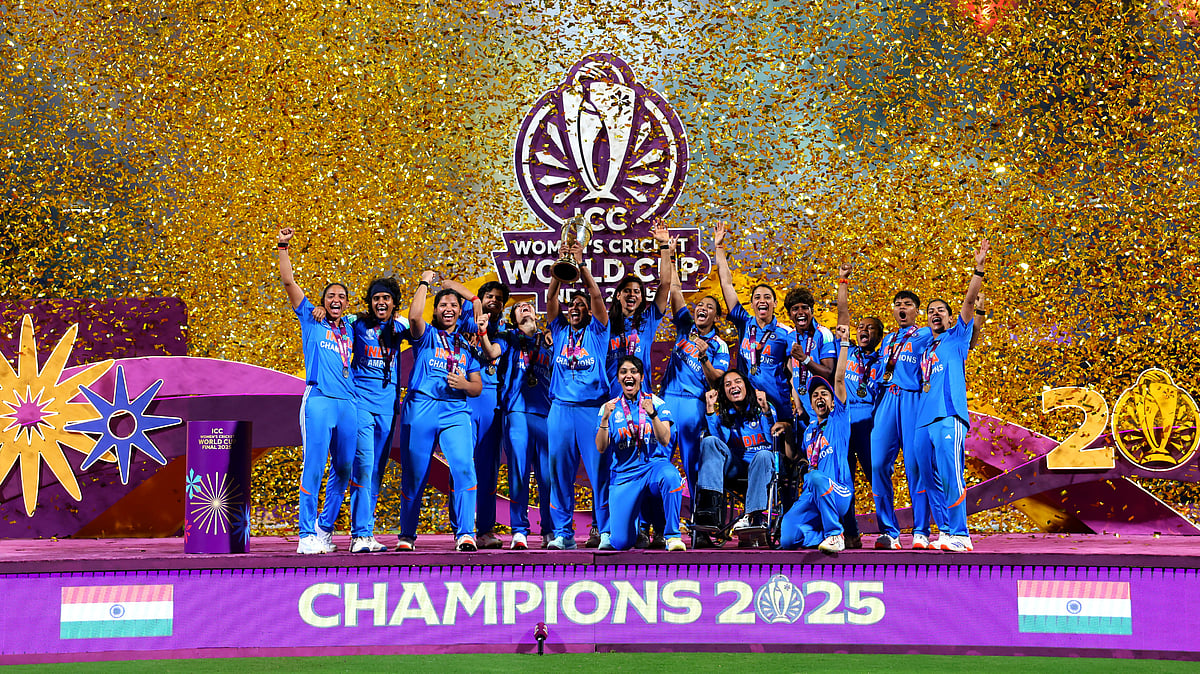2025 Is Women’s 1983 Moment? No, They Win Every Day. Only, You Didn’t Notice.
India's girls did not win for the first time yesterday. They have been winning every day — quietly.

advertisement
2 November 2025 is being hailed as the 25 June 1983 equivalent for the Indian women’s cricket team.
Harmanpreet Kaur, lifting India’s maiden ICC Women’s ODI World Cup title at the DY Patil Stadium in Navi Mumbai, is being likened to Kapil Dev hoisting the Prudential Cup at Lord’s.
There Was A Revolution Before 1983
One can rightly call India’s World Cup win — a 52-run triumph over South Africa in the final — a watershed moment. It crowns a team that has endured decades of heartbreak.
This, though, does not mark the commencement of a revolution. The revolution has been in the making for the last five decades. A revolution, that has often been stalled, and sometimes sabotaged, but never extinguished.
What was there to remember, one might ask?
It governed women’s cricket in India, but did not offer much beyond mere regulation. There have even been allegations of money laundering behind the façade of the organisation, but that calls for an investigative reportage beyond the scope of this article.
Sleeping Outside Toilets, No Match Fee, Dumped In Dormitories — The World Cup Legends We Don't Speak About
The revolution, though, had been triggered. And it was done purely out of might. The Indian cricketers did not receive any financial compensation for their efforts. Vis-à-vis, the male cricketers received Rs 1,500 as match fee for every ODI during the 1983 World Cup, which amounts to roughly Rs 30,000 in today’s money, alongside a daily allowance of Rs 200.
It was not restricted to that.
And yet, India competed in its maiden home World Cup. The story largely went unreported. Perhaps it was meant to.
19 Years Later, Another World Cup But Same Story
But 1978 seems in the distant past, and situation must have improved for the female cricketers following Kapil Dev’s ’83 heroics?
Ideally, it should have. This is not a very ideal world.
The next Women’s World Cup hosted by India was two decades later — in 1997. Unlike the previous instance, where only three touring teams turned up, this was a robust competition with eleven participants. And unlike the previous instance, where India lost all of their matches, the hosts qualified for the semi-final.
Had it not been for Cathryn Fitzpatrick’s spell, India might have qualified for the final. Albeit they did not, they were invited for the final, held in Kolkata’s Eden Gardens stadium.
If 1997 feels distant as well, Mithali Raj — who was among the fortunate ones to lift the trophy on 2 November — would tell you that even she had to travel in train for matches.
Don't Be Fooled — Treatment Had Not Changed Until Recently
In one such November, merely 19 years ago, the Board of Control for Cricket in India (BCCI) took the women’s team under its wing. Reluctantly, if one can say so.
Despite the onboarding being done in 2006, it took the board another nine years to offer professional central contracts to its female cricketers.
Indeed, during India’s last ODI World Cup triumph before yesterday, the female cricketers did not have any central contracts.
Amid all the aforementioned obstacles, that, a stable Indian women’s cricket team had existed since the last 70s, is a revolution in itself. esterday’s triumph was merely the crowning moment of a long-fought revolution. Decades of struggle, obscured victories, and quiet perseverance culminated in this instant.
For the Indian women’s team, decades happened over the last few weeks. It is only now that we are noticing the revolution.
The 1983 men’s victory is celebrated as revolutionary, for, it was the men’s first significant victort. But Indian women had been winning quietly for decades. Every day, they’ve faced — and overcome — obstacles that would have ended most dreams.
Why do we say so?
Our Girls Win Every Day
In a country ranked 174th of 181 nations for female representation in government or executive roles, a girl aspiring to carve her niche and make an identity of her own is a victory in itself.
In a nation accounting for 40% of the world’s child brides, a girl chasing a professional career is a victory in itself.
In a country where 2,39,000 girl children under five die annually due to discrimination, the simple-yet-rebellious act of picking up a bat is a victory in itself.
In a nation where a girl child is 75% more likely than a boy to die from neglect, and selective abortions have created a projected deficit of 6.8 million girls between 2017–2030, each girl who survives and dreams is a victory in itself.
2 November 2025 was not 25 June 1983. It did not spark a revolution — it was the latest chapter in one that had been building quietly for decades.
And, it was not the first instance of India’s girls winning. When you do not provide someone with a level playing field, the very act of not deserting the battleground is a victory in itself. Our girls had won every day, up until now. It is just that only yesterday, you chose not to be blind.